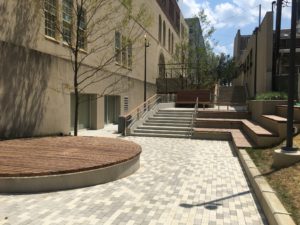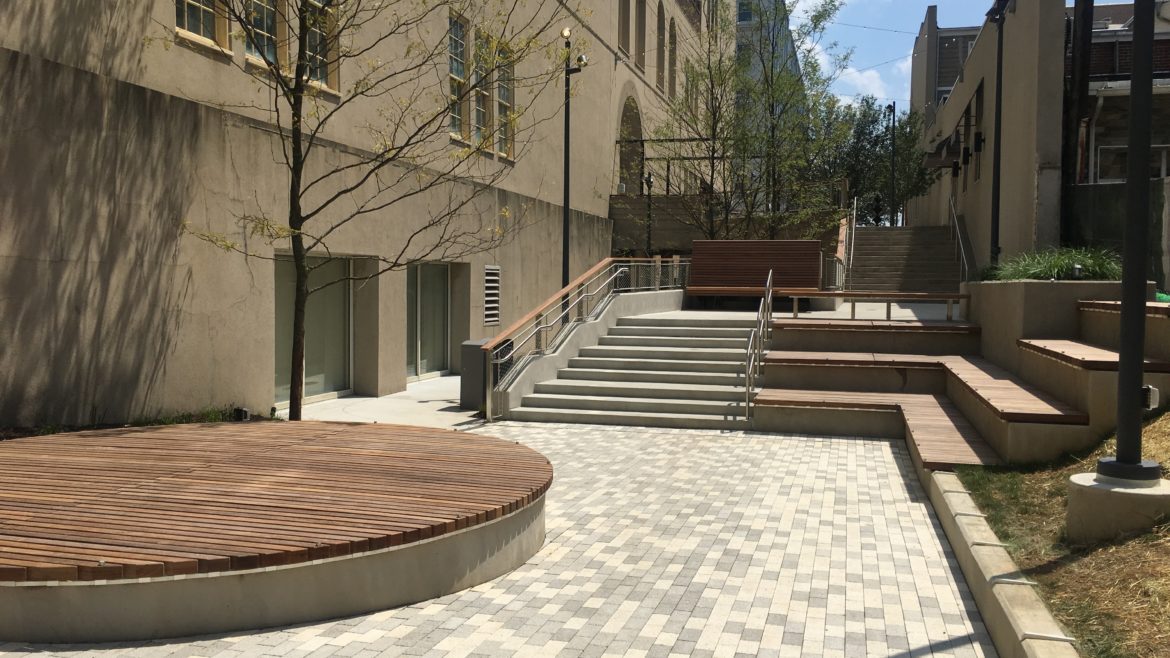$3 Million Invested in Public Spaces in the NIZ

The ongoing investment in the construction of new buildings and the redevelopment of existing buildings has dramatically transformed Allentown’s skyline and reestablished the downtown as a vibrant business center. But investment in improving public spaces such as streets, sidewalks, alleys, and parks is key to creating the sense of place and community needed to continue attracting and retaining employees, residents, and visitors.
Placemaking undertaken to create an inviting environment where people want to gather, live, work, and play requires investment in public realm amenities. The importance of investing in our public spaces is clear when you consider just how much land is in the public right-of-way. A landscape framework plan prepared by landscape architect and urban design studio Land Collective in 2016 calculated that 28% of the total land in the Allentown plan’s focus area was in the public right-of-way. The framework plan recognized the value of pubic space is its ability to positively influence the “connective tissue” of the city and the lives of thousands.
With this in mind, just over a year ago the board of the Allentown Neighborhood Improvement Zone Development Authority (ANIZDA) took steps to facilitate investment in public spaces within the NIZ by establishing a program and adopting Guidelines for Public Improvement Investments eligible for funding through the Authority. To date, five projects are substantially complete.
- The Court Street Artswalk Extension project between N. 6th Street and N. Law Street transformed an unattractive, poorly lit, alley primarily used for service, loading, and trash receptacles into a pleasant pedestrian-oriented “Art Alley”. It addressed the missing link between the ArtsWalk entrance at 7th Street and the Allentown Art Museum at 5th . Improvements include a wider sidewalk, new paving installation using the standard pavers used in the surrounding blocks of the ArtsWalk, benches, planters, lighting, and a more prominent decorative crosswalk at 6th Street. The result is improved pedestrian circulation through a safe and inviting public alleyway linking the Allentown Art Museum, Baum School of Art, Allentown Arts Park, and Miller Symphony Hall to the PPL Center.
- The Hamilton Street Artswalk Connector project also enhanced the Artswalk by improving the existing pedestrian connection to Hamilton Street in the 600 block. The redesigned and reconstructed public space includes new landscaping and decorative paver walkway, platforms for seating, congregating, and live performances, catenary, platform, and bench lighting, two large murals, and sculpture installations.
- The Soldiers & Sailors Monument Lighting project at Center Square involved the installation of new programmable architectural lighting designed to enhance the iconic monument that has stood proudly at the center of downtown Allentown since 1898.
- The Parking Authority Pay Station Kiosk project replaced single space parking meters with sleek, state-of-the-art electronic pay stations throughout the Neighborhood Improvement Zone. The new kiosks reduce sidewalk clutter and provide increased convenience to parkers who may pay at any pay station in the city, regardless of where they park, using multiple payment options including debit or credit cards, coins, and bills.
- The ACR Development Public Improvements project was undertaken in conjunction with the adaptive reuse of the Klein Building at Front and Hamilton Streets. The prominent corner is a gateway to the Lehigh Riverfront area. New sidewalks, curbs, ADA ramps, street and pedestrian lighting, pedestrian crossing, and street trees increase the attractiveness of this redevelopment area and improve connectivity.
Investment in these five projects totaled approximately $3 million. The various projects were managed through a collaborative effort of the City of Allentown, City Center Allentown, ACR Development, and the Allentown Parking Authority.

